
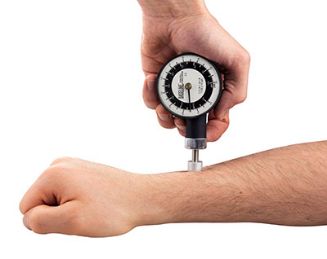
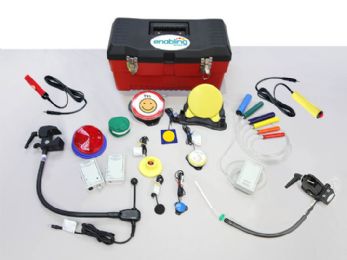
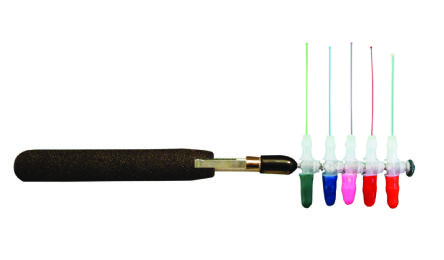
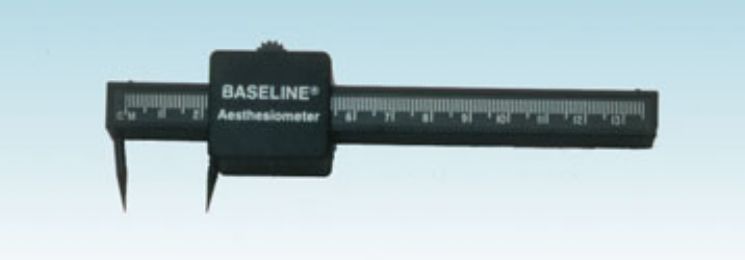
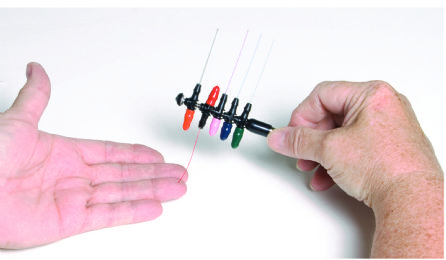



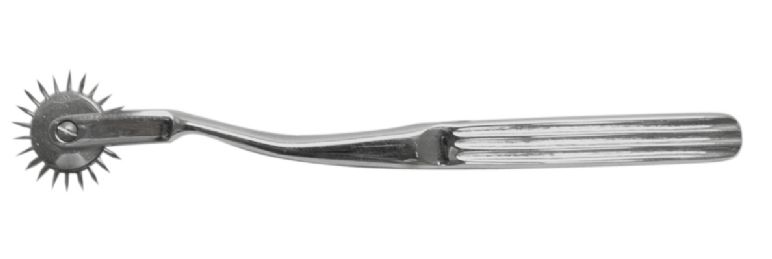
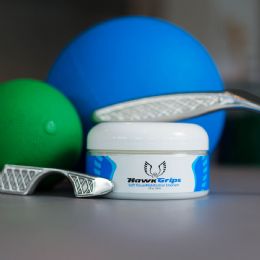
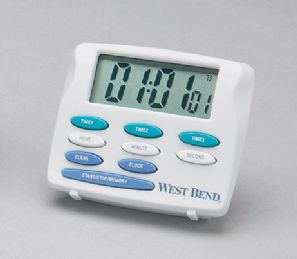
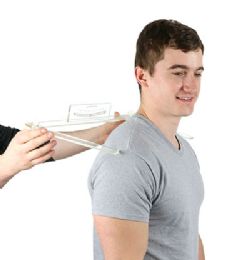
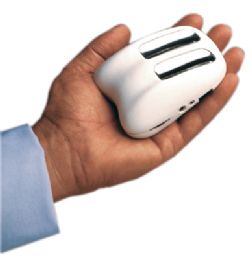
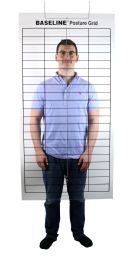
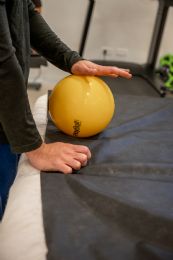
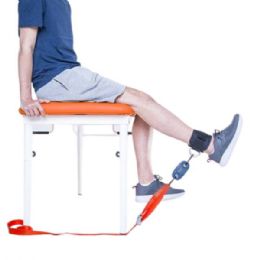

What are Sensory Evaluations?
Sensory evaluations are a powerful tool. They work with the basic psychology and physiology of the five senses. They are a scientific method that stimulates, measures, analyzes and interprets the sensory responses of touch, sound, sight, taste and smell. Sensory evaluations are concerned with accuracy, precision and sensitivity just like any other scientific methods of taking measurements. Dependable sensory evaluations can be performed by developing four steps. They are: definition of the problem, test design, instrumentation, and interpretation. The environment should be carefully controlled wherever the sensory test is being conducted.
What is a Dynamometer?
A dynamometer is a sensitive evaluation of hand muscle strength. Loss of hand muscle strength can be caused by nerve injury, carpal tunnel syndrome, neuromuscular disorders, and tendon injuries of the hand. Hand strength testing is frequently used to diagnose diseases, to document progression of muscle strength, to evaluate and compare treatments, and to provide feedback during the rehabilitation process. In evaluations and studies on those with hand problems, muscle strength measurements are normally based on pinch strength and grip strength dynamometry.
The hand-grip test is performed by a hand dynamometer. Hand-grip strength gradually diminishes as people get older. Maintaining decent hand-grip strength levels can enable the elderly to perform daily living tasks better. The curved handle of a dynamometer copies the pattern of the hand when making a fist, and is pliable and receptive to pressure against it. A monitor is attached to the hand-grip and shows the strength of the squeeze in kilograms. Some advanced models may have a digital readout.
Specific dynamometers measure single actions in the hand, such as thumb opposition of index finger abduction.
What is a Cognitive Test?
A cognitive test helps detect possible cognitive impairment. Individuals with memory concerns or other cognitive complaints should be evaluated. Non-memory symptoms include depression, falls or balance issues, personality changes, and deterioration of a chronic disease without any explanation. If cognitive impairment has been reported to a physician, that individual needs to be tested even if the individual is not aware of it.
There are benefits to detecting cognitive impairment early:
• A better chance of benefiting from the treatment.
• More time to plan for the future.
• Decrease anxiety about unknown problems.
• Help advance research by increasing the chance of participating in clinical drug trials.
• Give the individual an opportunity to participate in the decisions about their living options, care, transportation, financial obligations and legal matters.
• Give the individual time to develop a relationship with their doctors and care partners.
• Make it easier for the patients and their families to manage the disease.
What is a Tuning Fork?
A tuning fork is a metal instrument with a handle and two prongs or tines, made of aluminum, steel, or magnesium. When a tuning fork is struck against an object, it begins to vibrate. The vibrations can be used to check a person’s ability to hear different sound frequencies. A vibrating tuning fork is held against the skull or next to the ear and will stimulate the inner ear to vibrate, helping to determine if there is a hearing loss. Two types of hearing tests with tuning forks are typically conducted, the Rinne test and the Weber test.
In the Rinne test, the vibrating tuning fork is held against the skull. It is usually on the bone behind the ear to cause vibrations through the bones of the skull and inner ear. It is also held next to the ear, but not touching it. It causes vibrations in the air next to the ear. The patient is then asked to determine which sound is louder, the sound through the bone or through the air. A patient with normal hearing will hear the tone of the vibration louder and longer when the tuning fork is held next to the ear, rather than against the bone. A hearing loss is detected when the patient hears a longer and louder tone when it is held against the bone, rather than next to the ear.
In the Weber test, the handle of the vibrating tuning fork is placed at various points along the midline of the face and skill. The patient is then asked to determine which ear hears the sound. Tuning forks of different sizes produce different frequencies of vibrations. They can be used to establish the range of hearing for each patient. In normal hearing, the tone produced when the tuning fork is placed along the center of the face or skull sounds about the same volume in each ear. This test can indicate which ear may have a hearing loss by the volume of sound vibrations that are conducted through parts of the face and skull.
What is Stereognosis?
A medical term for the ability to identify objects through touch is stereognosis. When a person handles an object, touch signals are sent to the brain and the brain identifies the object. This ability is present in healthy people. But it can be affected in those who have lesions in the brain. If the person cannot identify solids properly, then they suffer from a lack of knowledge of the solid, called astereognosis.
Touch is a sense that everyone uses all day, every day. Most of the time without noticing it. Identification through touch comes when a stone is in a shoe, a countertop has crumbs on it, or when a movie goer wants to find the candy in a box, while in the dark theater. When the other senses are not involved, stereognosis is this ability to recognize objects.
Healthy people usually do not have trouble identifying most objects in their hands. This is because the touch receptors in the hands receive the information about the details of the object and send the information to the brain to be interpreted. The brain uses the information signals to figure out what the object is.
The signals from the hands can be misinterpreted when the brain is damaged. The person affected with a lesion in the area of the brain involved cannot properly recognize the object in their hand. This is why a stereognosis test is sometimes performed on those who may have suffered from a brain lesion.
Evaluations of this kind simply test the ability of the person to identify common objects placed in their hands. A person who cannot identify the common objects suffers from astereognosis, an indication that a brain lesion is present.
What is a Volumeter?
A volumeter is a device used for measuring volume, which is the amount of space an object takes up in three dimensions. A container filled with water is the simplest and oldest example of one. The volume of the object can be measured by determining how much water is displaced when an object is place in the container. Other volumeters may rely on displacement of other substances, such as solids or gases. This depends on what is being measured. Another characteristic that can be measured with a volumeter is density.
The sensitivity of a volumeter varies, from being able to measure the respiration of small living organisms to providing a more raw output. Sensitive devices may need to be calibrated before use. Periodically testing them to confirm they are still as sensitive as needed can be done. They usually need to be handled carefully to avoid breakage or damage that might interfere with their measurements. To make sure they are performing accurately, volumeters can come with calibration tools like premeasured blocks.
What is a 2-Point Discriminator?
A 2-point discriminator is used to evaluate the ability to discern that two nearby objects are touching the skin at two distinct locations. This ability is called 2-point discrimination. The test often uses two sharp points during a neurological exam and reflects how finely stimulated an area of skin is. It relies on the patient’s ability or willingness to clearly report what they are feeling and should be conducted with their eyes closed. The therapist may randomly alternate between touching the patient with one point or two points on the area being tested, an arm, finger, leg, or toe. The patient is then asked to decide if one or two points were felt. The patient’s 2-point threshold is the smallest distance between two points that still results in the perception of two distinct touches, and is recorded. Performance can be compared for discrepancies on the two extremities (arms, hands, legs, or feet).
What is a Dolorimeter?
A dolorimeter is an instrument used to measure pain tolerance and pain threshold. It applies steady pressure, electrical stimulation, or heat to an area, or moves a joint or another body part to determine what level of pressure, electric current, heat, or amount of movement produces a sensation of pain. Sometimes the pressure is applied by using a blunt object, or by pressing a sharp instrument against the body. And sometimes pressure is applied by locally increasing the air pressure on some area of the body.
Rehabmart is pleased to offer a wide range of sensory evaluation tools from reputable vendors that include Maddak, North Coast, Fabrication Enterprises, Ty-Q Corporation, Chattanooga, Sammons Preston and MaxiAids.
Hulet Smith, OT
Rehabmart Co-Founder & CEO
lb